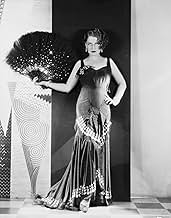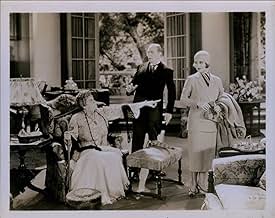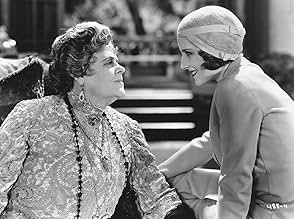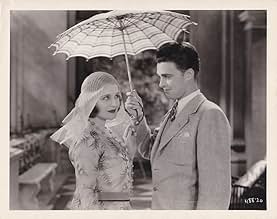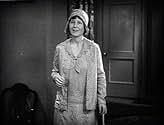Ama de casa descuidada se divorcia de su esposo tras la llegada de su amante. Se reinventa, convirtiéndose en un icono de la moda.Ama de casa descuidada se divorcia de su esposo tras la llegada de su amante. Se reinventa, convirtiéndose en un icono de la moda.Ama de casa descuidada se divorcia de su esposo tras la llegada de su amante. Se reinventa, convirtiéndose en un icono de la moda.
- Dirección
- Guionistas
- Elenco
- Premios
- 1 premio ganado en total
Rod La Rocque
- Bob Brown
- (as Rod LaRocque)
Tyrell Davis
- Wallace
- (as Tyrrell Davis)
William H. O'Brien
- Struthers
- (as William O'Brien)
Freddie Burke Frederick
- Bobby Brown - 8 Years Old
- (sin créditos)
Mary Gordon
- Mrs. McIntyre
- (sin créditos)
Marilyn Harris
- The Brown's Little Girl
- (sin créditos)
Helene Millard
- Helen Hibbard
- (sin créditos)
Dickie Moore
- Bobby Brown - 5 Years Old
- (sin créditos)
- Dirección
- Guionistas
- Todo el elenco y el equipo
- Producción, taquilla y más en IMDbPro
Opiniones destacadas
Norma Shearer dazzles as she is transformed from a frump, addle-brained house-wife to an alluring potential divorcee. Most 1930 films have a creaky edge to them -- the camera work is pretty sluggish at times -- but we must forgive these all-talking pleasures for their thump-a-long "qualities". As a guest of the eccentric globe-trotting Marie Dressler -- Shearer mixes with an odd assortment of lovelorn types, including her long-lost husband. The dialogue is fun, oft-times clever and the performances on cue. Shearer and Dressler shine the most. Shearer even shows off her piano expertise in a musical brevity. Her strange, yet appealing posturing and "affair with the camera" are evident throughout -- and she hits every emotional note, genuinely and on target. For its time . . .a good show.
When a dowdy wife (Shearer) loses her husband, she decides to completely make herself over to win him back. Not "politically correct" by today's standards, but still fun to watch, especially the scenes with Marie Dressler and Hedda Hopper.
I happened to channel surf to Turner Classic Movies just as this one was beginning last night, and once I got past the unlikely opening sequence I couldn't possibly turn away from the unlikely rest of it. It's a romantic comedy with Norma Shearer and a supporting cast that includes a lovely Hedda Hopper and a formidable Marie Dressler. As these things go -- silly rich people playing out a ridiculous "who'll pair up with whom?" plot in a Long Island mansion -- it's amusing and pretty good fun. I guess it's not a movie to recommend per se, but I have to admit I was in the mood to enjoy it last night, especially Marie Dressler's overacting. So if you stumble across it as I did, sure, go ahead, stick around. You won't believe your eyes.
A rich old lady calls on a flirtatious divorcée to woo a Lothario away from her silly soon-to-be-married granddaughter.
LET US BE GAY is an interesting little domestic comedy which features some tart dialogue (courtesy of celebrated screenwriter Frances Marion) & good performances. While perhaps a bit mawkish at times, this can probably be blamed on the difficulties with early sound technology which tended to limit action & movement.
Norma Shearer can be credited with appearing in this minor film, rather than using her undoubted clout as Irving Thalberg's spouse to insist upon only A-grade pictures. She is especially effective in her first few scenes, where dowdy flat makeup makes her almost unrecognizable. Her extreme transmogrification from goose to swan could only happen in Hollywood, but it's scarcely profitable to spend much time worrying about that.
Rod LaRocque doesn't come off too well as Shearer's adulterous husband. Quite popular during Silent days, the talkies were not especially kind to him and his career would suffer. Here his role is not in the least sympathetic and one has to wonder what masochistic impulse moves women to desire the cad so much.
Magnificent Marie Dressler is on hand as an eccentric Long Island dowager. As a great friend of Frances Marion, one can easily imagine that the part was written expressly for her. Full of cranks & crotchets, she is very humorous. However, the tremendous warmth & essential goodness which would very shortly make her Hollywood's biggest star are largely missing.
Among the supporting cast, Hedda Hopper scores as a slinky society serpent, as does Wilfred Noy playing a comic butler. Movie mavens will spot little Dickie Moore as Shearer's young son & elderly Mary Gordon as her housekeeper, both uncredited.
LET US BE GAY is an interesting little domestic comedy which features some tart dialogue (courtesy of celebrated screenwriter Frances Marion) & good performances. While perhaps a bit mawkish at times, this can probably be blamed on the difficulties with early sound technology which tended to limit action & movement.
Norma Shearer can be credited with appearing in this minor film, rather than using her undoubted clout as Irving Thalberg's spouse to insist upon only A-grade pictures. She is especially effective in her first few scenes, where dowdy flat makeup makes her almost unrecognizable. Her extreme transmogrification from goose to swan could only happen in Hollywood, but it's scarcely profitable to spend much time worrying about that.
Rod LaRocque doesn't come off too well as Shearer's adulterous husband. Quite popular during Silent days, the talkies were not especially kind to him and his career would suffer. Here his role is not in the least sympathetic and one has to wonder what masochistic impulse moves women to desire the cad so much.
Magnificent Marie Dressler is on hand as an eccentric Long Island dowager. As a great friend of Frances Marion, one can easily imagine that the part was written expressly for her. Full of cranks & crotchets, she is very humorous. However, the tremendous warmth & essential goodness which would very shortly make her Hollywood's biggest star are largely missing.
Among the supporting cast, Hedda Hopper scores as a slinky society serpent, as does Wilfred Noy playing a comic butler. Movie mavens will spot little Dickie Moore as Shearer's young son & elderly Mary Gordon as her housekeeper, both uncredited.
Frumpy housewife Katherine Brown (Norma Shearer) adores her husband Bob (Rod La Rocque). Her every action is dedicated to his comfort. Unfortunately, his roving eyes find other women and in heartbreak, Katherine divorces him. Years later, the two meet again, this time under very different circumstances. Katherine has become a beautiful and charming woman of the world. She is invited to a small party by an eccentric friend (Marie Dressler) to lure Bob away from his latest conquest, the engaged young Diane (Sally Eilers). En route to seducing Bob, Katherine also catches the eyes of all of the men at the party.
Also appearing are Hedda Hopper as the beautiful Madge Livingston and Dickie Moore as Katherine's young son.
This film suffers a bit from early talkie syndrome. The editing is not as slick as it could be, with moments of complete silence and shots with no people in the frame. Sometimes the scenes are confined to one room with very little editing between people. The story is also quite old fashioned, especially the abrupt ending which does not comply with the rest of the film. However, it is worth watching especially for Shearer fans. It is fascinating to see such a startling transformation from an overweight housewife to a gorgeous and elegant woman.
Also appearing are Hedda Hopper as the beautiful Madge Livingston and Dickie Moore as Katherine's young son.
This film suffers a bit from early talkie syndrome. The editing is not as slick as it could be, with moments of complete silence and shots with no people in the frame. Sometimes the scenes are confined to one room with very little editing between people. The story is also quite old fashioned, especially the abrupt ending which does not comply with the rest of the film. However, it is worth watching especially for Shearer fans. It is fascinating to see such a startling transformation from an overweight housewife to a gorgeous and elegant woman.
¿Sabías que…?
- TriviaAt the time of its release, this film features the next two actresses to win Best Actress at the Academy Awards, Norma Shearer would win at the ceremony later that year for La divorciada (1930), and Marie Dressler the year after for Min and Bill (1930).
- ErroresNear the end of the film, just after the children depart with Boucci and their nurse, a shadow of the boom microphone falls across a column to the right of the scene.
- Citas
Mrs. Katherine Brown: For Heaven's sake, let's be gay about this!
- ConexionesAlternate-language version of Soyons gais (1930)
- Bandas sonorasOh Where Oh Where Has My Little Dog Gone
(1864) (uncredited)
Written by Septimus Winner
Sung a cappella by Rod La Rocque with modified lyrics
Selecciones populares
Inicia sesión para calificar y agrega a la lista de videos para obtener recomendaciones personalizadas
- How long is Let Us Be Gay?Con tecnología de Alexa
Detalles
- Fecha de lanzamiento
- País de origen
- Idioma
- También se conoce como
- Konsten att behålla en man
- Locaciones de filmación
- Productora
- Ver más créditos de la compañía en IMDbPro
- Tiempo de ejecución1 hora 19 minutos
- Color
Contribuir a esta página
Sugiere una edición o agrega el contenido que falta

Principales brechas de datos
By what name was Let Us Be Gay (1930) officially released in India in English?
Responda
